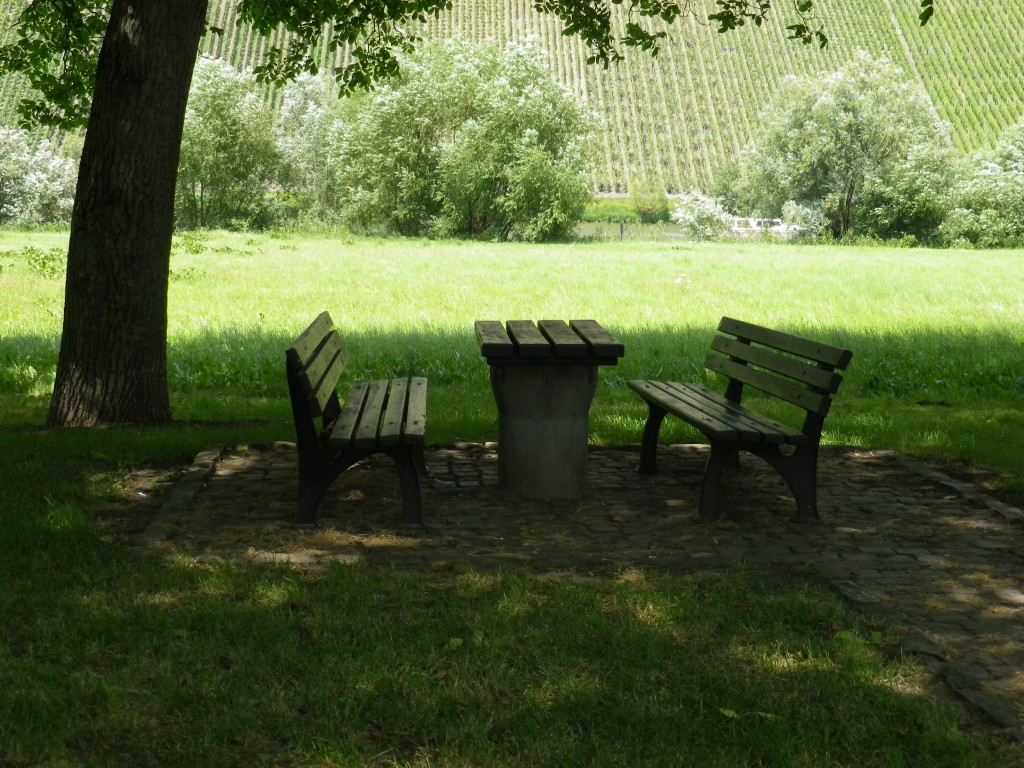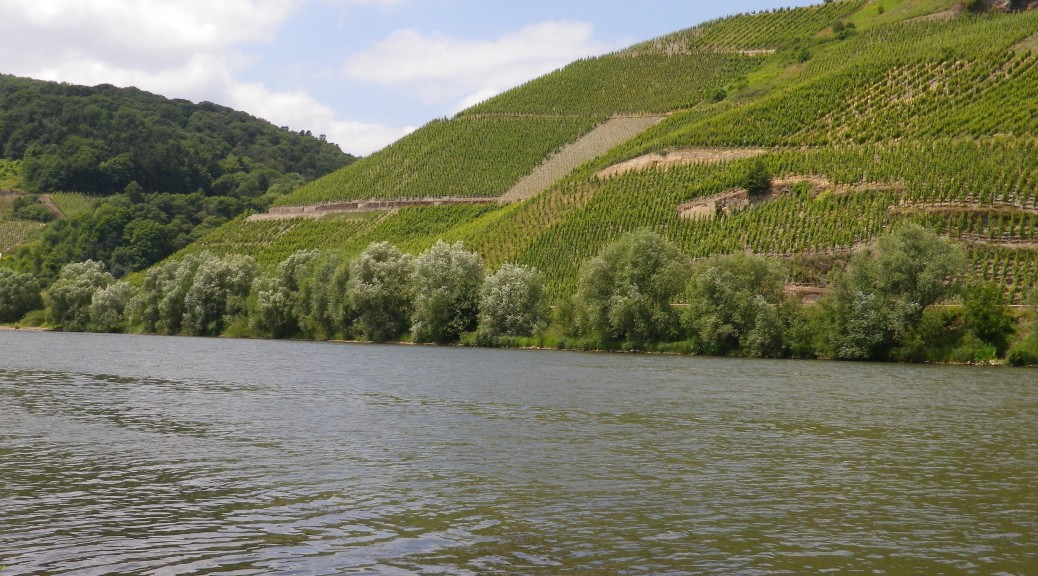Variety is the spice of life, as the saying goes – and this circuit trail proved the point. Landscapes as varied as meadows, fields and forest, hill and dale, streets, steps and dirt paths, and of course, vineyards and villages, all ranged along or near one of the most famous wine-growing riverscapes in the world: the Moselle River Valley. The variety and natural beauty of this trail will always enchant hikers with new vistas over each ridgeline, or views around each river bend.
And the Moselle does bend here! I am in my element with water, so to my delight, the trail began in Muelheim an der Mosel by following a meandering creek. Sometimes sheltered by a green arbor ways, the sight and sounds of its gentle flow relaxing, it was a wonderful start to a trail. The trail approached the village of Veldenz passing under dozens of trees planted to commemorate former “Wine Princesses.” German wine villages typically select a young local woman to represent them at wine festivals, fairs and parades. This very green method of remembering them will ensure a shady trail for decades!
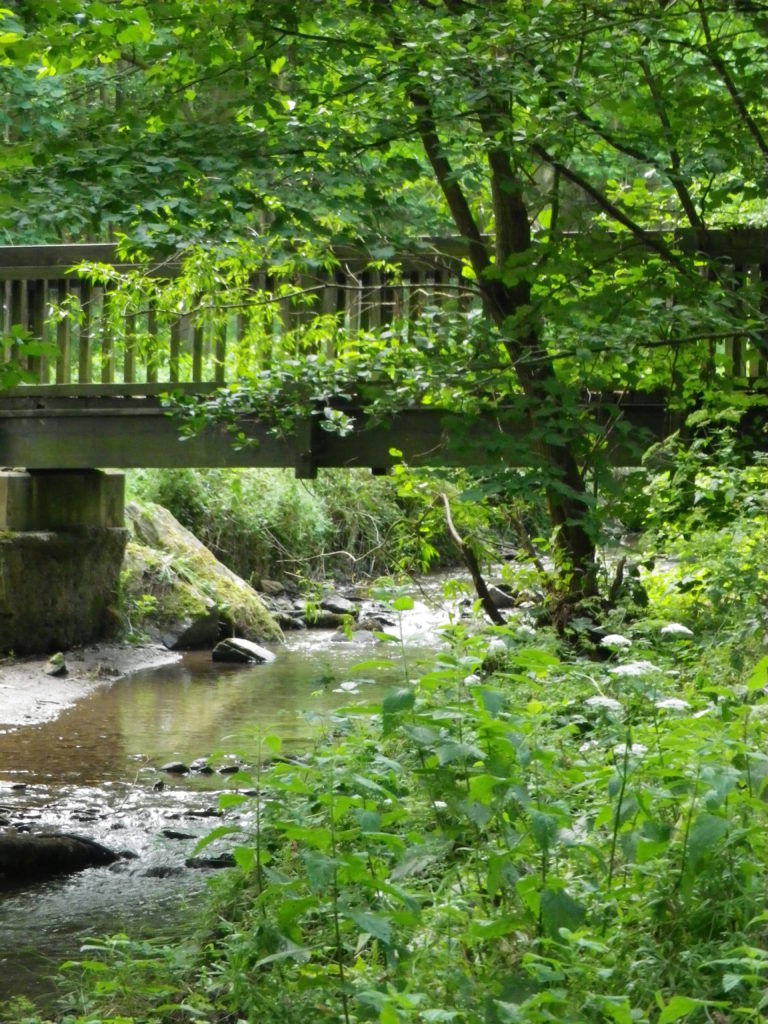
In early medieval times, the Emperor was the overlord here. Veldenz, the village and imposing castle, were important assets controlled by the local count supporting the Holy Roman Empire. Nowadays, the castle is in ruins, and the village’s cozy appearance belies its former pre-eminence. However, once in the village, the first of many family-owned wineries appeared. This is Veldenz’s importance today.
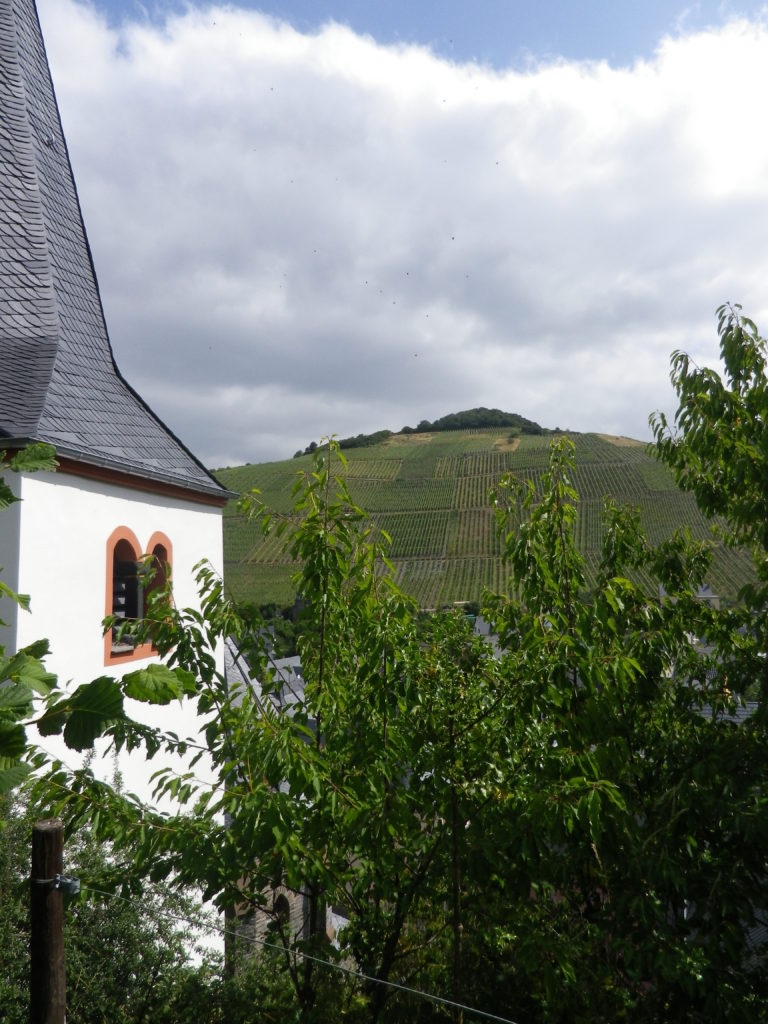
I didn’t stop to sample though, as the trail led uphill from the village to the ridgeline above it. Following through meadows, woods and fields, the trail eventually reaches the village of Burgen, set in a valley, with more wineries. My chosen winery, possessed of a nice courtyard surrounded by an old stone building, was unfortunately closed that day.
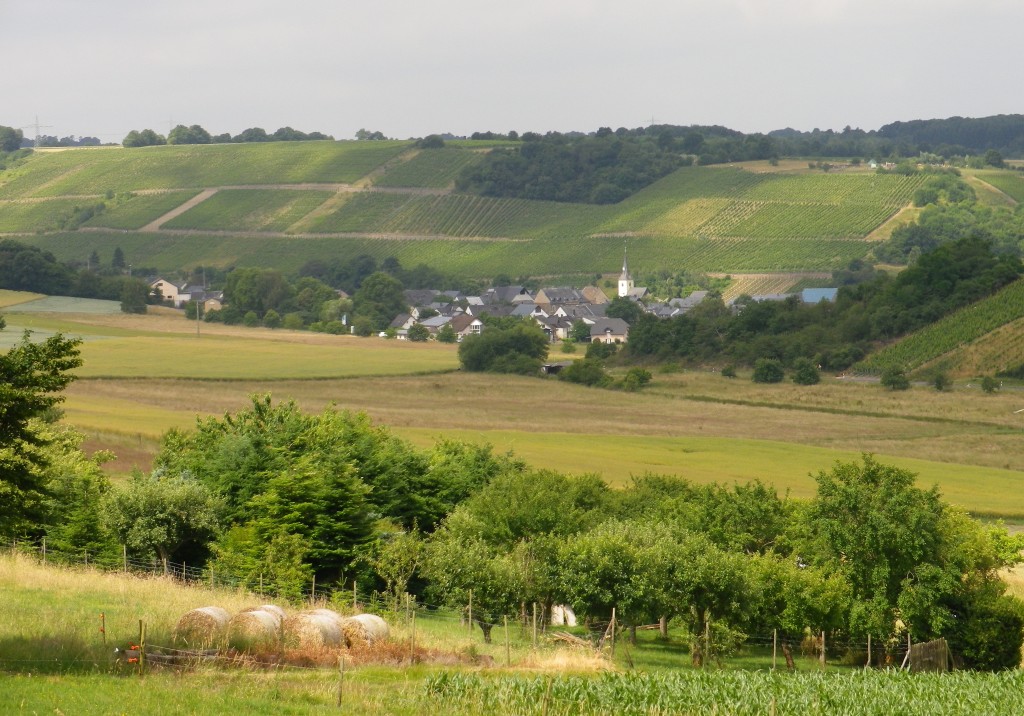
Sadly moving onward, a relatively long uphill segment of the trail led me through meadows and fields to the top of a forest-covered ridge. At this point, with all the switchbacks, I couldn’t tell any longer which way I was heading, north, south, east or west. It didn’t matter though, because this trail was superbly marked. I could have done it without my navigation device. Then, much to my surprise, the trail took me downward to enter another meadowed dale. I had to climb yet another ridge, albeit a gently inclined one, to the top.
On top of this final ridge, once clear of yet more woods, I suddenly caught a view of the Moselle. It wasn’t a long view of the river though, as this section of the Moselle twists and turns through cuts made through the steep hillsides. Luckily though, I did have a great view of the river loop formed just east of the famous wine village of Piesport, with vineyards rising from the river’s edge to the very top of the hill. After admiring the views, I gained first-hand experience of the steepness of the vineyard slopes along the Moselle, as the trail wound steeply downhill through vineyards to Wintrich, another small wine village.
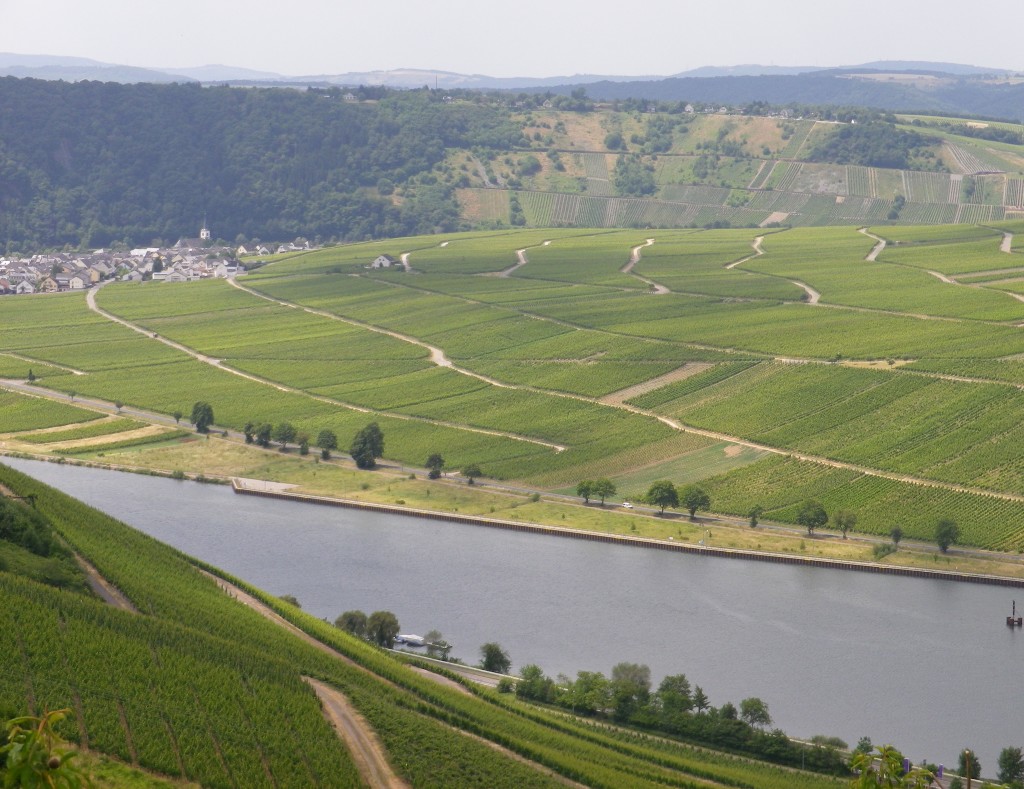
At this point though, wanting water rather than wine, I bought some water, along with bread and cheese, and a kilometer or so out of town, opposite the village of Kesten, I had a picnic lunch on the banks of the Moselle. There, I reflected on the relative advantages of visiting the Moselle and the Rhine. I find the Moselle and its shores more peaceful, less built-up, and more relaxing than the Rhine. It seems to have more green space. Its famous towns: Remich (in Luxembourg), Cochem and Bernkastel-Kues, are just as charming as similar towns along the Rhine. Its main city, Trier, provides just as much history, culture and discovery opportunities as does Koblenz. (It was the capital of the Roman Empire in the Third Century A.D., and has the monuments to prove it.)
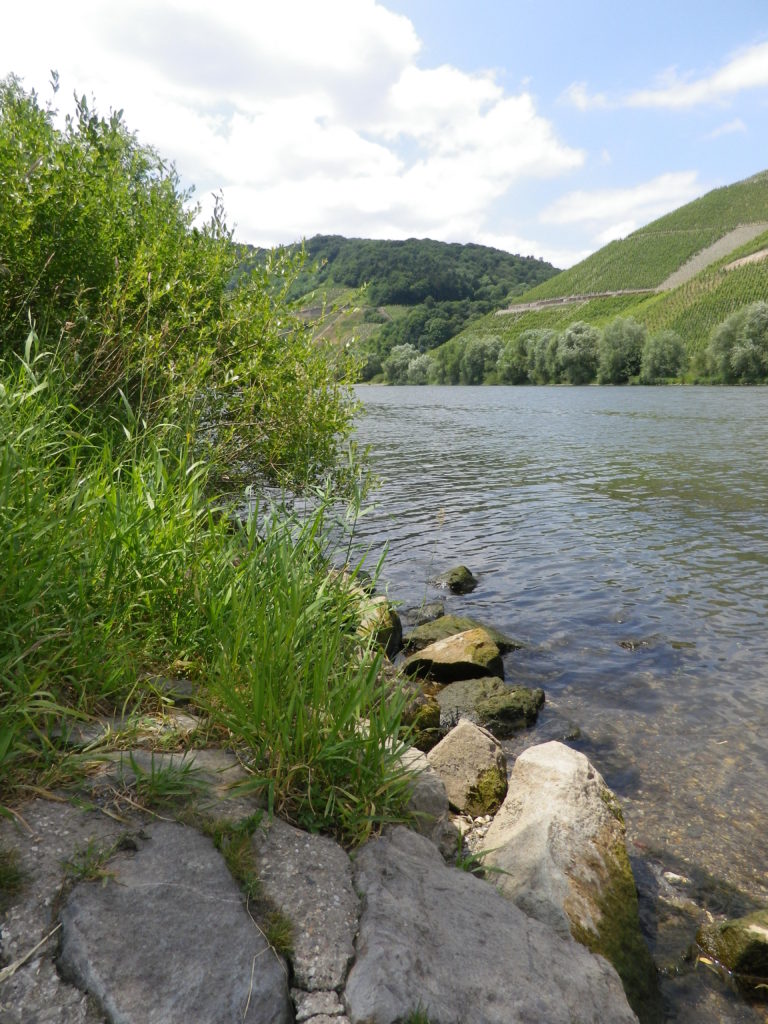
On the other hand, the Rhine is famed throughout the world, with good reason. Shipping on the Rhine has been the life-line for many Dutch, German, French and Swiss municipalities throughout time immemorial. To watch the Rhine’s barge traffic is to watch the world go by. Thus, there are many cultural influences and monuments to different eras along the river. For those who enjoy castles, both valleys have them in spades. However, the Rhine appears to have the advantage here. Heroic events took place in many of them. Songs or legends keep memories of these events alive even today. Seen dramatically silhouetted against vineyards or sky, the overall effect of these castles and their stories is to produce a romantic vision both literal and figurative that many visitors treasure for life.
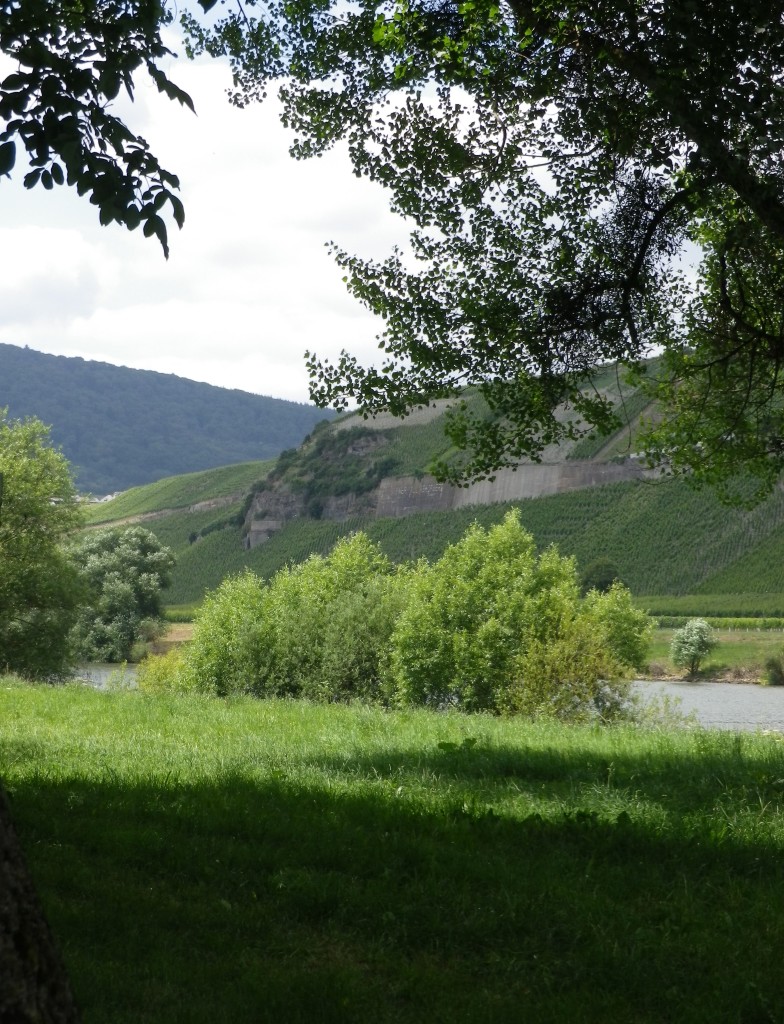
I hike for the wine though, and both river valleys produce excellent wines: so no comment (or preference) there. And the next segment of the hike took me to Brauneberg: the perfect village for a wine stop. The “business” side of the town faces onto the river, fronted by a tree-lined, car-free lane. (Watch out for bicycles though: this segment of the path is shared by cyclists biking all or part of the Moselle Bike Trail.) I traversed a quiet, wonderfully picturesque, wine-tasting opportunity zone for about a kilometer. Picnic benches were set by the river’s edge, shaded by beautiful old trees. The river, the vines, the steep hillsides opposite, make for pleasant viewing while sipping a chilled glass of Riesling, people-watching as hikers and bikers go by. Thus fortified, the two kilometers through vineyards back to Muelheim to complete the circuit, are easily done, and thoroughly enjoyed.
